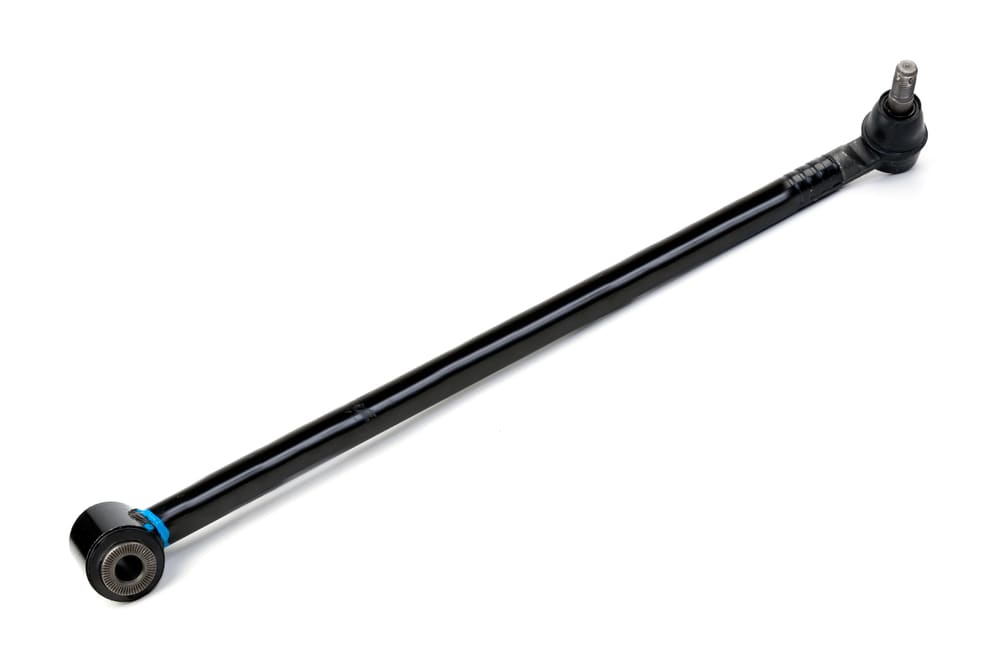

When it comes to vehicle suspension, modern cars and SUV's can be very biased to the front end. The front end suspension on front wheel drive vehicles impacts steering, stopping, accelerating and handling, while the rear end suspension just kind of hangs out. However, the wheel hubs and rear axle have a strong supporter in the lateral link. The job of the lateral link is to keep the rear wheels aligned straight and solid while the front end suspension does all the hard work. However, when the lateral link has problems or fails, it can have a huge impact on the safe operation of your vehicle.
The lateral link is attached to the wheel hub and the vehicle's sub-frame or solid frame depending on which option your vehicle offers. Its primary duty is to provide support to the rear axle and the rear wheels that are attached. It's a solid piece that also has bushings and support brackets that comprise the entire system. When a problem occurs with the lateral link, it's often with one of the supporting brackets and bushings that become loose. If it's caught quickly, it can be fixed rather easily by a certified mechanic.
When the lateral link goes bad or wears out, it can cause the rear end to be loose, impact steering, and in some cases, create a very unsafe driving situation. Issues with the lateral link will also display a few warning signs and indicators that a problem exists and should be fixed as soon as possible to avoid the potential safety concerns. Listed below are a few of the warning signs that a problem with the lateral link exists.
1. Steering and handling feel loose
People that are familiar with auto racing understand the basic principle of downforce. Essentially, air pressure moving over a vehicle creates a downward force or energy to provide additional weight to tires. This helps the vehicle to be more stable as it drives down the race track or makes turns. The lateral bar does the same thing, but from the bottom of the vehicle. Its primary function is to provide extra weight on the rear tires so they are firmly planted to the ground. This helps the rear end maintain stability as the vehicle makes a turn – especially on front wheel drive vehicles.
Without the pressure that the link contributes, the steering and handling of the vehicle will feel very loose and unstable. This is commonly caused by a lateral link that is loose or is failing. Continuing to drive with damaged or worn out lateral links can create an unsafe driving situation which is why you should contact a mechanic immediately if the rear end feels loose as you drive.
2. Clunking noises from the rear end
When the bushings and support joints on the lateral links begin to wear out, the links will make clunking noises every time the rear end drives over bumps in the road. However, the noise can also be noticed when you drive over seams, bridges or gravel roads as well. In a worst case scenario, the lateral link will break off its support and drag on the ground. This will also produce a very loud sound that is very easy to notice.
3. Increased wear on the rear tires
Although the lateral link provides added 'weight' to the rear tires, it does not produce additional wear and tear. In fact, on most front wheel drive cars and SUV's, the rear tires will wear three times longer than the front tires. This is why having your tires rotated every 5,000 miles is critical for overall tire wear. However, when the links fail or wear out, it can cause the inner or outer edges of the rear tires to wear out prematurely. This symptom is similar in many ways to front end alignment issues. When the lateral link is damaged, reduced weight will be applied to the inner or outer edge of the vehicle. The other edge will absorb more of the road and cause additional wear.
The lateral link on any vehicle is often overlooked but as you can clearly see above, it's a vital component of any car, truck or SUV. If you notice any of the above warning signs or symptoms, make sure to contact a professional mechanic as soon as possible so they can replace the lateral link.



